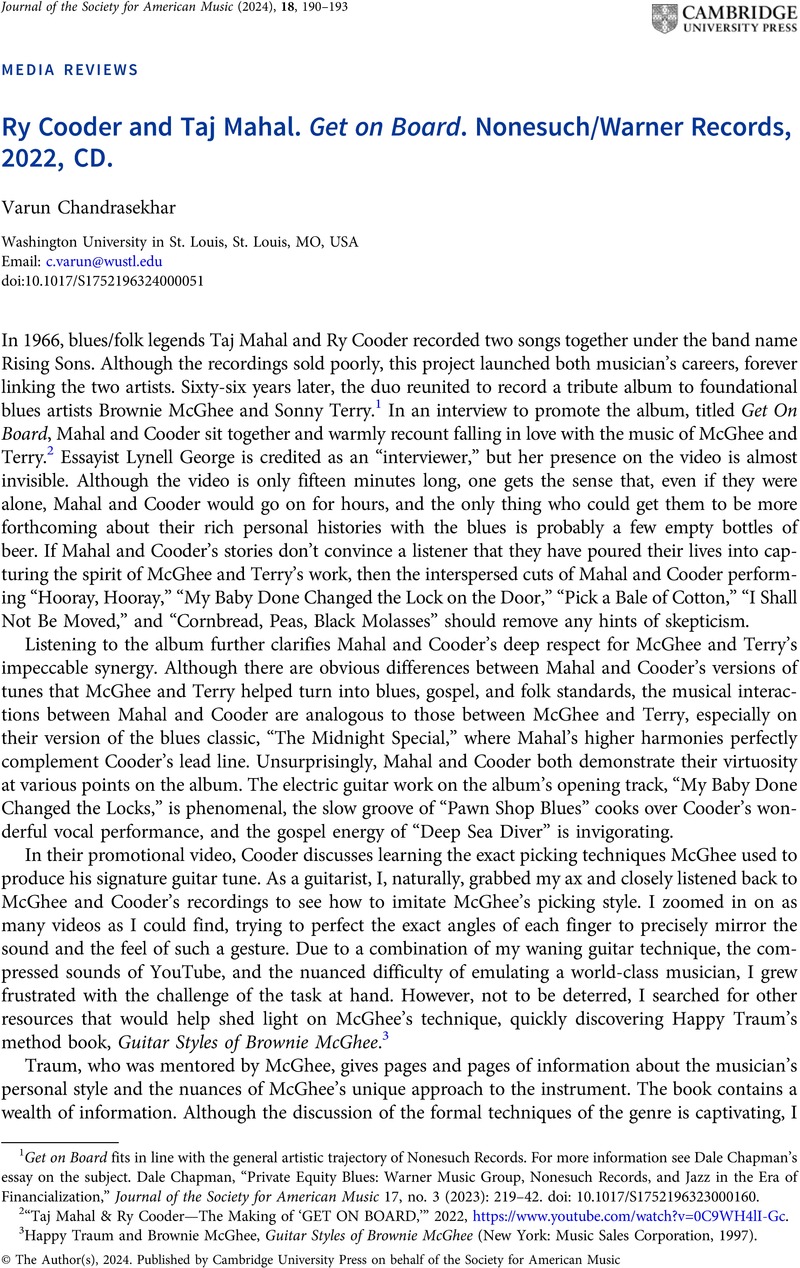No CrossRef data available.
Published online by Cambridge University Press: 06 March 2024

1 Get on Board fits in line with the general artistic trajectory of Nonesuch Records. For more information see Dale Chapman's essay on the subject. Chapman, Dale, “Private Equity Blues: Warner Music Group, Nonesuch Records, and Jazz in the Era of Financialization,” Journal of the Society for American Music 17, no. 3 (2023): 219–42. doi: 10.1017/S1752196323000160CrossRefGoogle Scholar.
2 “Taj Mahal & Ry Cooder—The Making of ‘GET ON BOARD,’” 2022, https://www.youtube.com/watch?v=0C9WH4lI-Gc.
3 Traum, Happy and McGhee, Brownie, Guitar Styles of Brownie McGhee (New York: Music Sales Corporation, 1997)Google Scholar.
4 Trouillot, Michel-Rolph, Silencing the Past: Power and the Production of History, 20th Anniversary Edition (Boston, MA: Beacon Press, 2015), 2Google Scholar.
5 Point, Michael, “Taj Mahal,” in Encyclopedia of the Blues, 2nd ed., ed. Komara, Edward (New York, London: Routledge, 2006), 951–52Google Scholar.
6 Trageser, Jim, “Ry Cooder,” in Encyclopedia of the Blues, 2nd ed., ed. Komara, Edward (New York, London: Routledge, 2006), 224Google Scholar.